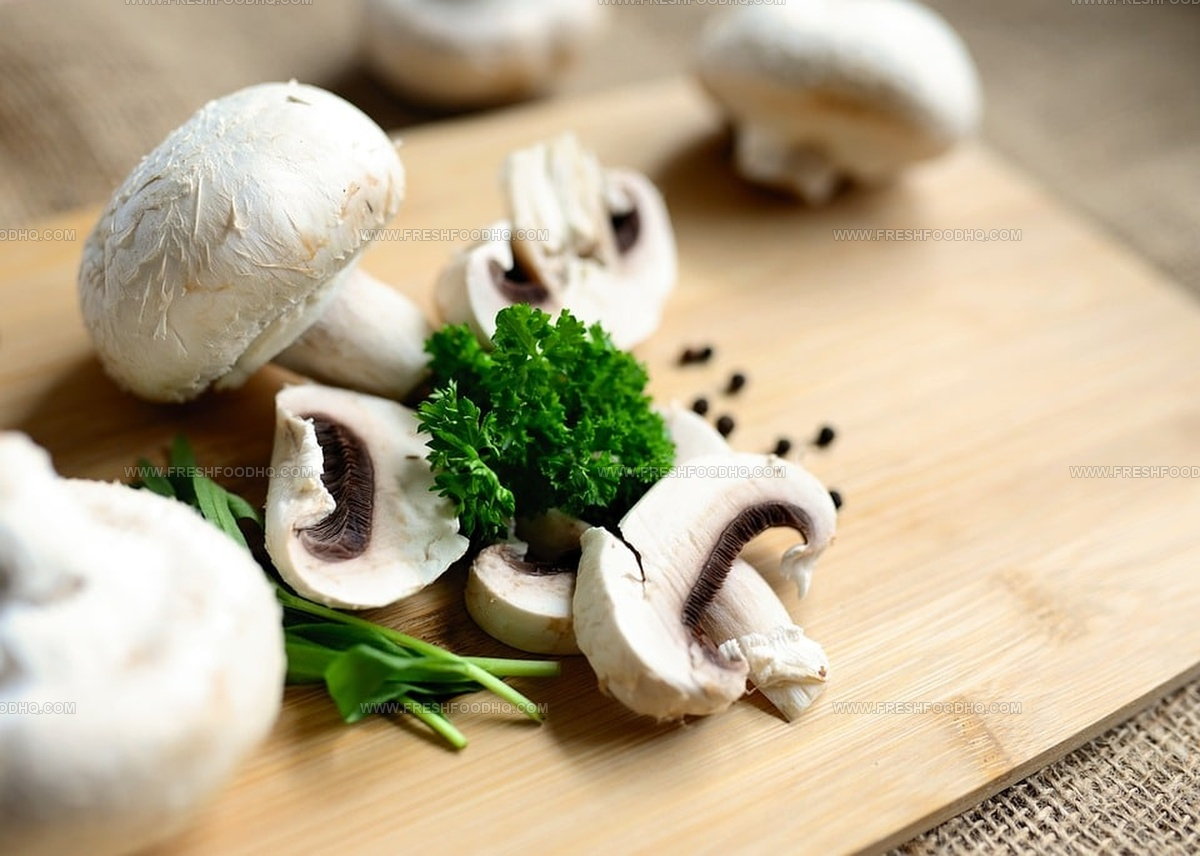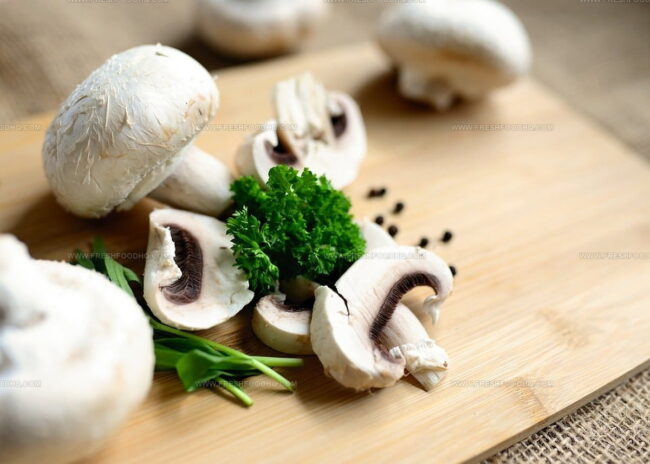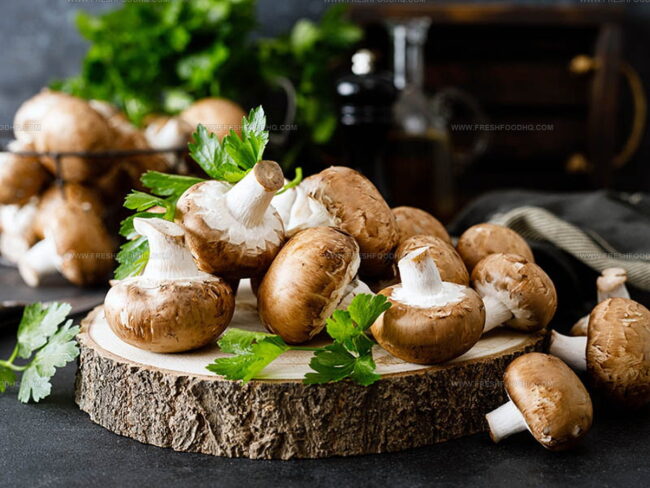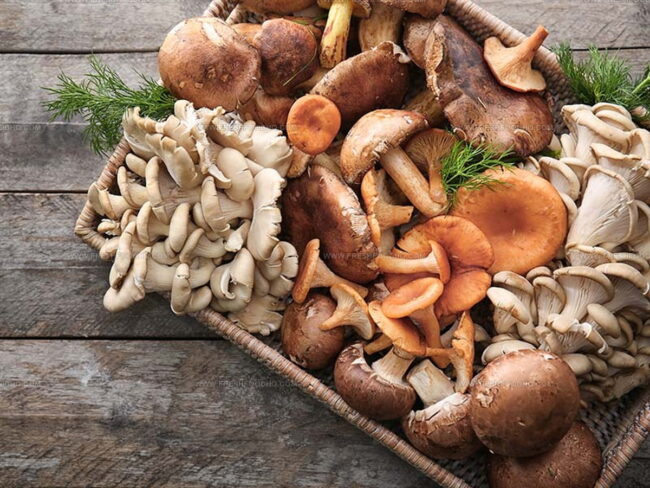What Do Mushrooms Taste Like? Earthy Wonders on Your Plate!
Mushrooms have become a culinary sensation that sparks curiosity among food enthusiasts and novice cooks alike.
Fascinating fungi grow in diverse environments, ranging from forest floors to carefully cultivated farms.
Some people approach mushrooms with hesitation, wondering about their unique flavor profile and texture.
Others embrace these versatile ingredients as potential game-changers in their cooking repertoire.
Wild and cultivated varieties offer different sensory experiences that can surprise even seasoned epicureans.
Understanding mushroom taste involves more than simply describing flavor - it's about exploring their complex characteristics and potential culinary applications.
Your taste adventure awaits as you uncover the delightful world of mushroom flavors and textures.
How Mushrooms Taste
Mushrooms spark strong reactions among food enthusiasts.
Their unique earthy flavor creates mixed emotions for many.
Some savor these strange forest growths, while others completely reject them.
Mushrooms belong to a special fungus family that sprouts in damp, dark spaces.
Their distinctive taste can seem weird or wonderful depending on personal preference.
Discussions about mushroom flavors have continued for generations.
Different mushroom species carry unique taste profiles that challenge taste buds.
Some individuals describe them as earthy and mild, while others sense more intense notes.
Certain mushroom varieties might taste slightly metallic or surprisingly bitter.
Flavor experiences change based on individual palate sensitivity and specific mushroom type.
Each bite offers a different sensory journey for curious eaters.
Flavor Differences Between Popular Mushroom Varieties
Mushrooms come in many shapes and sizes, each with its own unique taste and texture that can add depth to all sorts of dishes:
| Mushroom Variety | Flavor | Texture & Best Uses |
| White Button | Mild, delicate, slightly earthy | Versatile, absorbs other flavors; soups, sauces, salads |
| Cremini (Baby Bella) | Richer, earthier, a bit nutty | Firmer than white button; sautés, casseroles |
| Portobello | Deep, savory, robust | Meaty texture; grilling, roasting, burger substitute |
| Shiitake | Earthy, smoky | Soft texture; stir-fries, broths, noodles |
| Oyster | Mild, slightly sweet | Delicate, velvety; sautés, pastas, risottos |
| Enoki | Crisp, slightly fruity (raw); silky, mild (cooked) | Salads, soups, Asian dishes |
| Morel | Intense, nutty, woodsy | Honeycomb texture holds sauces; creamy or buttery recipes |
| Chanterelle | Fruity, peppery, subtle apricot aroma | Firm, chewy; eggs, pastas, chicken dishes |
| Maitake (Hen of the Woods) | Rich, earthy, umami-packed | Feathery, tender; roasting, pan-crisping |
Enhancing Mushroom Flavor With Different Cooking Methods
Cooking methods make a big difference in how mushrooms taste and feel, helping you bring out their best flavor and texture:
Mushrooms in World Cuisines
Mushrooms are celebrated in kitchens around the globe, adding earthy flavor and meaty texture to both humble and gourmet dishes:
Best Pairings: Mushrooms with Cheese, Wine, and Herbs
Mushrooms pair beautifully with a variety of cheeses, wines, and herbs, each combination bringing out their earthy, savory flavors in delicious ways:
Do Mushrooms Taste Good?
Mushrooms pack a powerful punch of nutrition and can slide into almost any meal.
These fungi carry a rich, meaty flavor called umami that adds depth to dishes.
Hearty mushroom varieties work as a budget-friendly protein alternative that brings serious taste to your plate.
Mushroom flavor profiles shift depending on type and preparation.
Newcomers might feel uncertain about adding them to meals.
Mixing mushrooms into smoothies helps smooth out their earthy taste.
Blending frozen mango or berries can mask the strong flavor.
Chocolate or peanut butter also work well to soften the mushroom notes.
Smoothie methods might deliver faster results compared to other eating approaches.
Can Mushrooms Be Cooked?
Melted butter sizzles in a frying pan over medium heat for pan-fried mushrooms.
Cooking continues for 45 minutes until mushroom edges turn dark golden brown after butter starts boiling.
Sprinkle salt and pepper according to taste.
Lowering heat helps cook for another 23 minutes.
High temperatures help mushrooms caramelize while removing extra moisture quickly.
Soft sizzling sounds signal skillet reaches perfect cooking temperature for fast moisture evaporation and mushroom caramelization.
Mixing mushrooms with a heatproof spatula or wooden spoon ensures even cooking.
Kitchen experts suggest avoiding overcrowded pans to prevent steaming instead of sautéing.
The Smell Of Cooked Mushrooms
Mushrooms start to smell bad when they go bad.
Their scent can turn sharp like ammonia or have a fish-like smell.
Any odor that isn't the normal earthy smell means trouble.
Mushroom lovers enjoy them in many ways.
Some like raw mushrooms while others prefer cooking methods like steaming, frying, pickling, or smoking.
Different cooking styles change how mushrooms taste.
Recipes work best when mushrooms are prepared carefully and with attention to detail.
Are Mushrooms Classified As Vegetables?
Mushrooms belong to fungi, not plant groups, despite often being called vegetables.
They share interesting traits with both plants and animals.
Unique among edible items, mushrooms stand out in their biological makeup.
Shoppers can find vitamin D-rich mushrooms in market produce sections.
These tasty fungi contain very few calories and minimal fat or cholesterol.
Salt levels remain quite low in most mushroom varieties.
Scientists classify mushrooms differently from typical vegetables.
Without leaves, roots, or seeds, and needing no sunlight to grow, mushrooms challenge traditional plant definitions.
Nutrition experts at agricultural departments recognize mushrooms as vegetable-like due to comparable health benefits and nutrient profiles.
Do Mushrooms Taste Like Truffles?
Describing truffle flavor challenges even seasoned food experts.
These underground treasures carry a unique taste similar to above-ground mushrooms, with deep earthiness and rich meaty notes.
Hints of their complex flavor include oaky, nutty, and sweet undertones mixed with a salty essence reminiscent of black olives.
Truffles belong to the fungus family that grows beneath soil surfaces.
Compared to regular mushrooms, truffles pack a stronger flavor punch.
Regular mushrooms offer mild tastes that blend easily into many dishes.
Truffles stand out boldly, often becoming star ingredients that dominate meal experiences.
Classifying truffles sparks interesting debates among food enthusiasts.
Technically, truffles qualify as fungus fruits.
Scientists consider truffles a specific type of mushroom since they develop as spore-bearing fruiting bodies from underground fungus networks.
Their unique growth pattern sets them apart from typical mushroom varieties found in markets and kitchens.





Samantha Lee
Recipe Developer & Content Creator
Expertise
Plant-based and vegetarian recipes, Recipe testing and development, Food blogging and digital content creation, Culinary education and workshops
Education
Oregon Culinary Institute (Portland, OR)
Samantha sees cooking like painting, every fresh herb, every juicy tomato, a new splash of color on a canvas.
After graduating from Oregon Culinary Institute, she blended her love of global cuisines and plant-based cooking into recipes that feel fresh, fearless, and full of heart.
Samantha’s kitchen is a place where comfort food gets a modern remix and every meal feels like a little adventure. When she’s not cooking, she’s out exploring farmers’ markets, sketching new recipe ideas, or getting her hands dirty in a community garden.